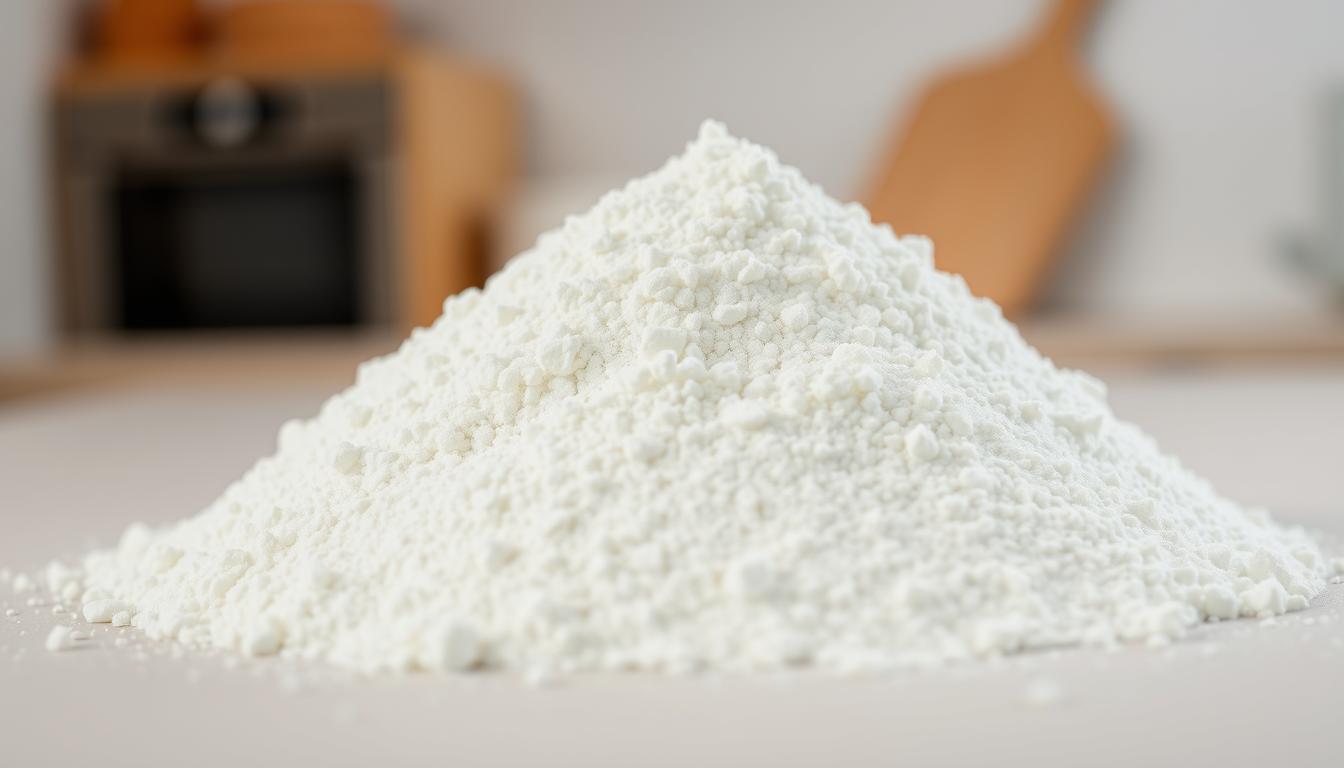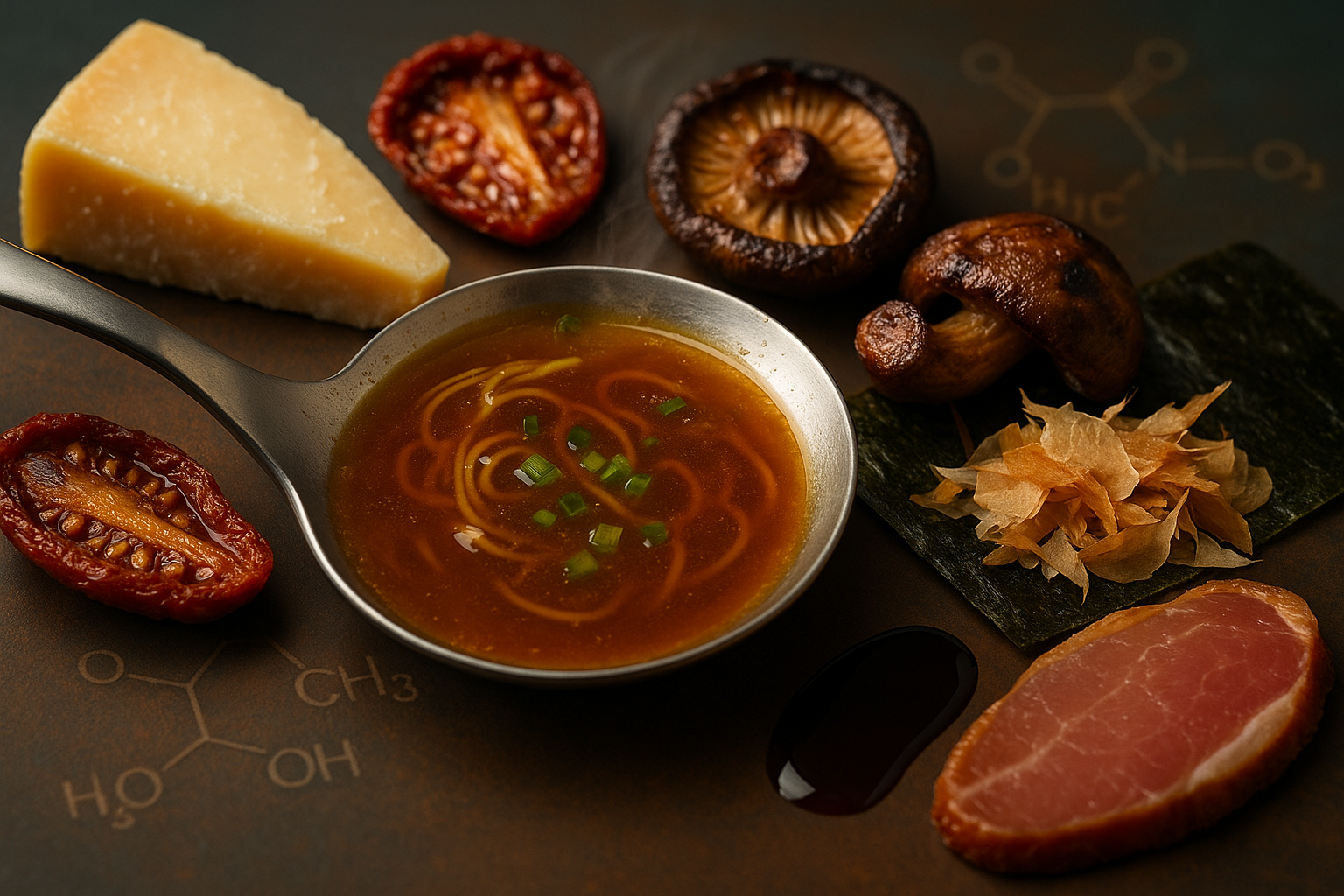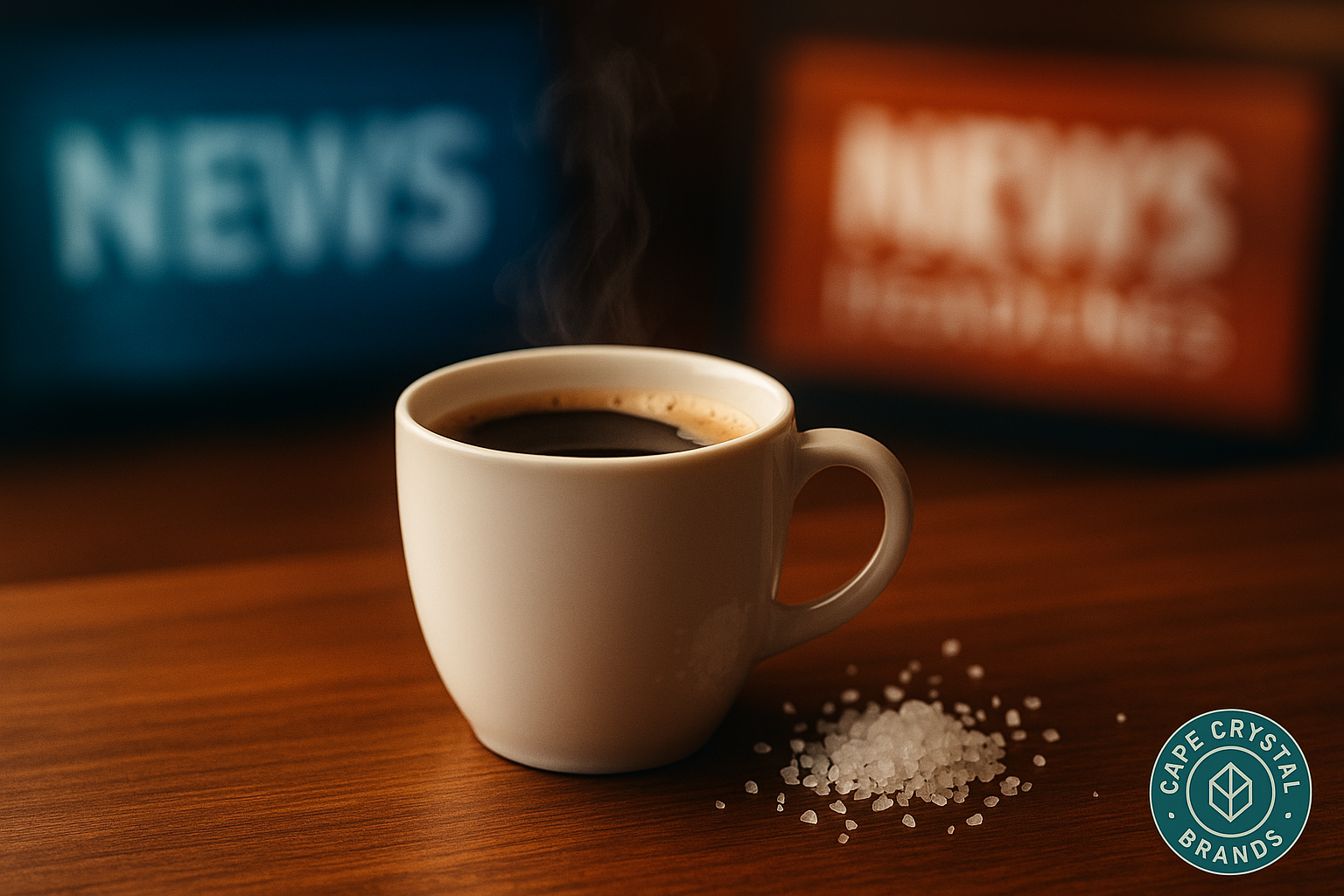
Enhancing Beer Quality with Propylene Glycol Alginate: A Brewer's Secret Ingredient
SUBSCRIBE TO OUR BLOG
Promotions, new products, and recipes.
Did you know that keeping foam stable matters a lot in beer making?1 Those who love craft beer and those who make it want their brew to taste great and look good. They often use a natural substance called propylene glycol alginate to make the foam last. This substance is very good at what it does and it doesn't change the taste of your beer.
Key Takeaways
- Propylene glycol alginate is a natural stabilizer that significantly enhances beer foam stability1.
- This additive aligns with consumer preference for natural ingredients in beer products1.
- Foam stability is a critical quality parameter in the overall presentation and taste of beer1.
- Using propylene glycol alginate contributes positively to both the foam texture and sensory profile of the beer1.
- It ensures safety considerations, making it an ideal choice for craft brewers and homebrewing enthusiasts1.
The Role of Foam in Beer Quality
Foam matters a lot in beer, affecting how it tastes and feels. The foam on a beer shows us how fresh and good it is. We'll look at why foam stays, what people like, and the tricky part for brewers.
Many things affect how long a beer's foam lasts. The ingredients, like certain malts, and how it's brewed make a big difference2. Keeping the foam up means the beer stays good longer. Even how the liquid is boiled adds to keeping the foam firm2. Craft brewers use special ways, like adding nitrogen, to make the bubbles in the foam small and even. This helps the foam last longer2.
Consumer Preferences and Expectations
People think a beer's foam proves its quality3. A good, lasting foam is what beer fans look for when they pick a beer3. Because craft beer is getting more popular, this is key for businesses. To make a beer that stands out, the foam must be just right. This balance makes the overall taste better without losing the foam's appeal.
Challenges in Achieving Stable Foam
It’s tricky to keep foam lasting long. Making beer stronger can actually make the foam fall faster2. Also, some ingredients can break down the foam, so clean supplies are a must2. Brewers sometimes add specific things to help the foam last. But doing it without changing the beer’s taste too much is hard. This shows why choosing the right methods and materials is crucial.
| Factor | Impact on Foam Stability |
|---|---|
| High Protein Malts | Improves foam stability |
| Nitrogenation | Creates smaller, stable bubbles |
| Higher Alcohol Content | Destabilizes foam |
| Detergents and Lipids | Destabilizes foam |
| Hydrocolloids (PGA, Gums) | Improves foam stability and viscosity |
Introduction to Propylene Glycol Alginate
Propylene glycol alginate is crucial in making beer. It comes from alginic acid in seaweed. This additive is famous for making beer foam stable. It improves the beer's quality and taste.
What is Propylene Glycol Alginate?
Propylene glycol alginate (PGA) is a natural stabilizer for beverages, including beer. It makes beer foam last longer, making the drink look and taste better. PGA mixes well with water. It's easily removed from the environment and doesn't build up in living things4.
Properties and Benefits in Beer Making
PGA is excellent at stabilizing beer foam. Brewers use it at around 40-100 mg/kg4. It makes the foam last 2-3 minutes longer. It also helps the foam stick to the glass, pleasing customers. PGA isn't just for beer; it helps make ice cream smoother too. Its versatility is a big plus for craft beer makers aiming for high-quality products.
How It Differs from Other Stabilizing Agents
PGA is different because it's natural and does more than just stabilize foam. It also enhances the beer's flavor and quality. This makes it ideal for craft brewers wanting to keep their products natural. PGA is widely accepted for beer use but isn't as limited as some other additives. It breaks down quickly in the environment, highlighting its green benefits4.
This additive is easy to use and greatly improves the drink's sensory aspects. That's why many consider PGA a top choice for natural stabilizers and additives.
Application of Propylene Glycol Alginate in Brewing
Adding propylene glycol alginate to beer needs careful planning. Brewers must know the right times to use it. This ensures beer tastes great and looks clear. The way it’s added depends on the brew process and what the brewer wants. It finds a balance between making foam better and keeping the natural taste.
Methods for Incorporation during the Brewing Process
Brewers use different ways to add propylene glycol alginate. They can mix it with water first or add it straight to the beer. This process works well at any point during making the beer, even while it's fermenting. Adding it this way keeps the beer clear all the way through. When incorporating PGA, mix it in a certain temperature range and stir well for large batches. This makes sure it completely dissolves. Filtering the solution through 1,000 microns removes any bits that did not dissolve5.
Getting the amount right and staying safe is key when using propylene glycol alginate. PGA is usually used at a rate of 40 to 60 mg/l to make foam stable5. It's safe to use at these levels, following specific rules for food safety in the UK, EEC, Australia, and New Zealand5. These rules are there to protect people and make sure the beer is good.
Using more might help improve the foam if there’s not much malt. For best outcome, use Drifoam as a 1% solution after filtering and within two days of making it5. This way, propylene glycol alginate helps the beer stay bubbly and goes well with many brewing methods.
Brewers can look to expert guides and documents to get the right info. For advice on how to use it and how it works, trusted sources like Lallemand Brewing's technical documentation can be very helpful.5
How Much to Add to a Keg
The amount of Propylene Glycol Alginate required for a keg can vary depending on the specific product and its concentration. However, a general guideline for using PGA to improve head retention in beer is approximately 10-20 parts per million (ppm).
For a typical 5-gallon (19-liter) keg, this translates to roughly 0.1 to 0.2 grams of PGA. Here's my step-by-step approach to adding PGA to your keg:
Calculate the Amount: Determine the exact amount of PGA needed for your keg size. For a 5-gallon (19-liter) keg:
10 ppm: 0.19 grams of PGA
20 ppm: 0.38 grams of PGA
Dissolve the PGA: Dissolve the measured amount of PGA in a small amount of warm, sterile water to ensure it fully dissolves. This helps in even distribution when added to the keg.
Sanitize Equipment: Ensure that all equipment used for mixing and adding PGA to the keg is properly sanitized to prevent contamination.
Add to the Keg: Slowly and gently add the dissolved PGA solution to the keg. You might consider gently rolling the keg to ensure even distribution of the additive without causing excessive foaming.
Impact of Propylene Glycol Alginate on Foam Stability and Taste
Propylene glycol alginate, or PGA, is a type of long sugar chain. It has special chemical groups making up 87.9% of it. This makes it good for adding to foods, especially in making beer6. Studies show it helps keep beers fresh and their foam lasts longer. So, it's a top pick for making beer foam steady.
Scientific Studies and Findings
Studies have proven that using PGA can really help beer foam stay longer. When mixed with another substance, OVA, and set to a certain acidity, it makes a really good foam. This is due to molecules attracting each other strongly. This research underlines how brewing science is vital in getting the right results6. The acidity levels play a big role in making the foam just right.
Comparative Analysis with Other Foam Enhancers
PGA works differently from common foam boosters like certain beer ingredients. While those ingredients, like hop products, can help foam, they might also add a bad taste. On the flip side, PGA helps foam without the bad taste. That's why it's a favorite choice among brewers today.
Sensory Evaluation and Consumer Feedback
After careful taste tests and reviews, PGA showed it makes beer taste better. People consistently said the beer was tastier thanks to the smooth and good-looking foam PGA helps create. Also, findings from research support this. It shows PGA improves the whole beer-drinking experience.
Conclusion
Homebrewing fans and craft brewers are using propylene glycol alginate (PGA) more and more. They see it as key in making better beer naturally. PGA's use in homebrews is growing because it's safe and does a lot for the beer's quality7.
PGA helps keep the foam on beer and the beer clear. This makes it great for people wanting to improve their craft beer with PGA. It does this without changing how the beer naturally tastes or feels8. Plus, it makes the beer look and feel good, thanks to alginate's gelling superpowers8.
Introducing PGA in brewing brings big benefits. It's liked by many and research says it's good and safe. Using PGA can make a brewer's beer really standout. It shows the brewer's care for the beer's quality, taste, and using safe stuff. This lets their products shine in a tough market8.
FAQ
What is Propylene Glycol Alginate?
Propylene Glycol Alginate is made from seaweed's alginic acid. It acts as a natural stabilizing agent in beer. This enhances foam stability and quality without changing the beer's taste.
Why is foam stability important in beer?
Good foam shows beer is well-brewed and makes it more attractive. It's a sign of quality and affects how much people like the beer.
How does propylene glycol alginate differ from other stabilizing agents?
This agent keeps foam stable and the beer's flavors true. It’s perfect for craft beers and homebrewing because it doesn't add weird tastes or textures.
What are the main benefits of using propylene glycol alginate in beer making?
It improves foam, taste, and clarity of the beer. It meets the demand for natural ingredients in products. This makes consumers happy.
How can brewers incorporate propylene glycol alginate into the brewing process?
They can dissolve it in water or add it directly to the beer. This is done at different brewing stages. It helps keep the beer clear and consistent.
What dosage levels of propylene glycol alginate are recommended for brewing?
The amount used depends on what you want. But, it must not change the beer's taste too much. Always use it carefully and follow safety tips.
Are there any scientific studies supporting the use of propylene glycol alginate in brewing?
Yes. Studies show it makes beer foam better and improves how it tastes and feels. The tests agree it's better than hop bitter acids for this.
What do consumers think about beers stabilized with propylene glycol alginate?
People like how these beers taste and look. They think the foam is stable and looks good. This makes drinking beer more enjoyable for them.
Is propylene glycol alginate safe for use in homebrewing?
Using it in small amounts is safe for both big and small scale brewing. Just make sure to follow safety advice when using it.
Can propylene glycol alginate improve beer consistency and clarity?
Yes. It makes the foam and the beer clearer, making the final product stand out and look great.
Source Links
- https://www.asbcnet.org/events/archives/2015Meeting/proceedings/Pages/16.aspx
- http://www.backtoschoolbrewing.com/blog/2020/3/30/beer-foam
- https://beerandbrewing.com/dictionary/PoV1K8jeSb/
- https://www.sciencedirect.com/topics/agricultural-and-biological-sciences/propylene-glycol
- https://www.sciencedirect.com/science/article/abs/pii/S0268005X22006890
- https://paleofoundation.com/propylene-glycol-alginate/
- https://www.sciencedirect.com/science/article/abs/pii/S0268005X1630011X
Well That's the Story. I hope it was helpful. Let's Hear Your Thoughts!
We've shared our insights, and now it's your turn! Have an opinion, a question, or a story to share about this article? Dive into the comments below and join the conversation. Your voice is a crucial part of this community, and we're eager to hear what you have to say.
Thought that was fascinating? Here’s another story you might like:
See: The Hydrocolloid Glossary
For further reading:
Lipid Oxidation in Foods – Cape Crystal Brands
Every dish deserves the perfect texture to complement its flavors. Why settle for anything less than perfection? With Cape Crystal Brands Food Texture products, you don't have to. Whether you're crafting velvety sauces, glistening gels, or fluffy mousses, our range ensures you get the consistency you desire every single time.
Don't just cook—create masterpieces. Dive into the world of culinary textures and elevate every meal. Shop now and experience the magic of Cape Crystal!
🛍️ Click Here to Explore Cape Crystal Brands Food Texture Products!

Chef Edmund
Edmund McCormick is the founder of Cape Crystal Brands and EnvironMolds LLC. He is the author of several non-fiction “How-to” books, past publisher of the ArtMolds Journal Magazine, editor of Beginner's Guide to Hydrocolloids, and author of six eBook recipe books available for download on this site. He resides in Far Hill, NJ and lives and breathes his food blogs as both writer and editor. You can follow him on Twitter and Linkedin.

|
About the Author Ed is the founder of Cape Crystal Brands, editor of the Beginner’s Guide to Hydrocolloids, and a passionate advocate for making food science accessible to all. Discover premium ingredients, expert resources, and free formulation tools at capecrystalbrands.com/tools. — Ed |
Enjoyed this post? Subscribe to The Crystal Scoop
Food-science tips, ingredient know-how, and recipes. No spam—unsubscribe anytime.
- Choosing a selection results in a full page refresh.







